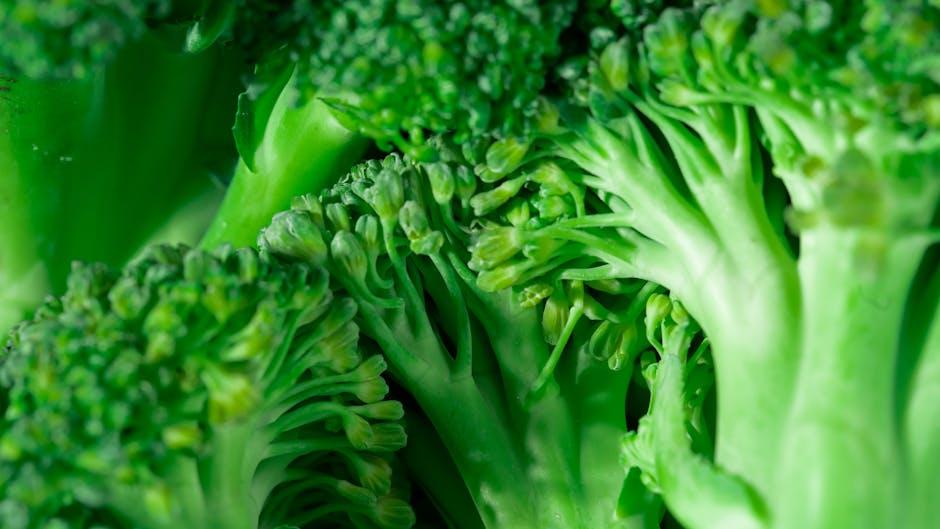In a world where dietary trends often seem to clash, the quest for meals that satisfy both health goals and personal values can feel like navigating a culinary labyrinth. Enter low-carb vegetarian recipes—a harmonious fusion that redefines what it means to eat thoughtfully and deliciously. These dishes shatter the myth that cutting carbs means sacrificing flavor or that vegetarianism confines one to carb-heavy fare. Instead, they offer a vibrant palette of ingredients that nourish the body while igniting the palate. Whether you’re motivated by wellness, ethics, or curiosity, exploring low-carb vegetarian cuisine opens a door to inventive, wholesome meals that honor both plant-based living and mindful eating.
Table of Contents
- Exploring the Benefits of Low-Carb Vegetarian Eating
- Essential Ingredients for Flavorful Low-Carb Vegetarian Dishes
- Creative Protein Sources to Power Your Low-Carb Vegetarian Meals
- Delicious Low-Carb Vegetarian Recipes for Every Mealtime
- Tips for Balancing Nutrition in a Low-Carb Vegetarian Lifestyle
- Q&A
- The Way Forward

Exploring the Benefits of Low-Carb Vegetarian Eating
Adopting a low-carb vegetarian lifestyle isn’t just a trend—it’s a versatile approach to nourishing your body while embracing plant-based principles. By shifting focus from high-carb staples like bread and pasta to nutrient-dense vegetables, nuts, and plant-based proteins, this eating style helps maintain balanced blood sugar levels and supports weight management. It also encourages creativity in the kitchen, inviting you to experiment with diverse ingredients such as tofu, tempeh, and an array of leafy greens.
- Improved energy stability throughout the day
- Reduced cravings due to balanced macronutrients
- Boosted intake of fiber and antioxidants
- Support for heart health with lower saturated fats
Here’s a quick glance at how a typical low-carb vegetarian plate compares with a traditional vegetarian plate:
| Category | Traditional Vegetarian | Low-Carb Vegetarian |
|---|---|---|
| Primary Carb Source | Rice, pasta, bread | Zucchini noodles, cauliflower rice |
| Protein | Legumes, dairy | Tofu, tempeh, nuts |
| Vegetables | Various, including starchy | Mostly low-carb greens & cruciferous |
| Fats | Modest amount | Higher, includes healthy fats like avocado & olive oil |
Embracing this eating pattern can unlock a new dimension of health benefits, perfectly tailored for those seeking to balance carb intake without sacrificing flavor or ethical choices.
Essential Ingredients for Flavorful Low-Carb Vegetarian Dishes
Creating dishes that tick both the low-carb and vegetarian boxes requires a thoughtful selection of ingredients that deliver robust flavors and satisfying textures. Nuts and seeds like almonds, chia, and flaxseed not only add crunch but also provide healthy fats essential for satiety. Incorporating a variety of fresh herbs and spices such as basil, cumin, and smoked paprika can transform simple vegetables into aromatic masterpieces, elevating every bite without adding extra carbs. Don’t underestimate the power of umami-rich components like nutritional yeast and sun-dried tomatoes, which impart depth and a savory punch that keeps your meals exciting.
Balancing low-carb restrictions with vibrant vegetarian nutrition also means leveraging a rainbow of colorful veggies and plant-based proteins. Cauliflower, zucchini, and leafy greens serve as versatile bases, while tofu, tempeh, and edamame bring the protein punch needed for a complete meal. To maximize flavor and variety, consider these staple ingredients:
- Avocado: Creamy texture and healthy fats
- Mediterranean olives: Natural saltiness and bold flavor
- Coconut aminos: A low-carb, savory alternative to soy sauce
- Cauliflower rice: A versatile grain substitute
- Ricotta or paneer: Mild cheeses adding richness and protein
| Ingredient | Main Benefit | Flavor Profile |
|---|---|---|
| Eggplant | Fiber-rich filler | Earthy and mild |
| Walnuts | Omega-3 fatty acids | Buttery and slightly bitter |
| Shiitake mushrooms | Umami boost | Smoky and meaty |
| Spinach | Iron and vitamins | Light and slightly sweet |
Creative Protein Sources to Power Your Low-Carb Vegetarian Meals
Unlock a world of nourishment beyond the usual suspects by embracing lesser-known yet protein-packed ingredients that perfectly complement your low-carb vegetarian lifestyle. Think beyond tofu and lentils—explore nutrient-dense options like hemp seeds, which boast a complete amino acid profile while adding a nutty crunch to salads and smoothies. Edamame, young green soybeans, deliver a fresh burst of flavor and fiber alongside their protein punch. Don’t overlook the creamy richness of Greek yogurt, a superb ingredient for dips and dressings that keeps your meals satisfying without carb overload.
For a delightful twist, mix and match from this unique selection to keep your dishes exciting and energized:
- Chia seeds: Transform into pudding or sprinkle on salads for fiber and omega-3s.
- Seitan: A wheat gluten powerhouse ideal for mimicking meat textures.
- Tempeh: Fermented soy with a robust, nutty flavor perfect for stir-fries.
- Paneer: Indian cheese that complements spicy curries beautifully.
| Protein Source | Protein (per 100g) | Carbs (per 100g) |
|---|---|---|
| Hemp Seeds | 32g | 9g |
| Edamame | 11g | 8g |
| Greek Yogurt | 10g | 4g |
| Seitan | 25g | 14g |
Delicious Low-Carb Vegetarian Recipes for Every Mealtime
Embracing a low-carb vegetarian lifestyle doesn’t mean sacrificing flavor or variety. From vibrant zucchini noodles bursting with aromatic herbs to creamy cauliflower rice mixed with sautéed mushrooms and almonds, these dishes offer nourishing options that keep your carb intake in check. Vegetables, nuts, and seeds take center stage, transforming simple ingredients into satisfying meals that energize and delight your palate without the heavy carbs.
Explore the versatility of plant-based proteins and fiber-rich veggies with recipes designed for every meal of the day. Whether it’s a hearty breakfast scramble with spinach and feta or a refreshing avocado and cucumber salad, each dish brings bold tastes and textures. Here’s a snapshot of some favorites that prove wholesome, low-carb eating can be both delicious and easy to prepare:
- Breakfast: Chia pudding with almond milk and cinnamon
- Lunch: Grilled halloumi with roasted red pepper and arugula
- Dinner: Stuffed portobello mushrooms with walnut and goat cheese filling
- Snacks: Spiced roasted chickpeas
| Recipe | Main Ingredients | Carbs (g) |
|---|---|---|
| Cauliflower Rice Bowl | Cauliflower, mushrooms, almonds | 8 |
| Zucchini Noodle Stir Fry | Zucchini, bell peppers, tofu | 10 |
| Spinach and Feta Scramble | Eggs, spinach, feta | 5 |
Tips for Balancing Nutrition in a Low-Carb Vegetarian Lifestyle
Maintaining a balanced nutritional profile while adhering to a low-carb vegetarian diet demands a strategic approach to food choices. Prioritize plant-based proteins like tofu, tempeh, seitan, and legumes in moderation to satisfy your protein needs without excess carbohydrates. Incorporate a variety of leafy greens and cruciferous vegetables such as kale, spinach, and broccoli to boost fiber intake and essential micronutrients. Don’t shy away from healthy fats sourced from avocados, nuts, and seeds, which not only keep you satiated but also support brain health and hormone balance.
Supplementing your diet with nutrient-dense alternatives ensures you avoid common deficiencies in a low-carb vegetarian lifestyle. Here are essential tips to keep in mind:
- Combine complementary proteins to create complete amino acid profiles.
- Use herbs and spices liberally for flavor and antioxidant benefits without added carbs.
- Consider fortified products or supplements for Vitamin B12, iron, and omega-3 fatty acids.
- Stay hydrated and include mineral-rich foods to support metabolic function.
| Nutrient | Key Sources | Low-Carb Tips |
|---|---|---|
| Protein | Tofu, Tempeh, Seitan | Pair with nuts or seeds |
| Iron | Spinach, Lentils | Combine with Vitamin C-rich foods |
| Omega-3 | Chia Seeds, Flaxseeds | Use ground seeds for better absorption |
Q&A
Q: What exactly are low-carb vegetarian recipes?
A: Low-carb vegetarian recipes are dishes that minimize carbohydrate content while excluding meat, poultry, and fish. They focus on plant-based ingredients like vegetables, nuts, seeds, eggs, dairy, and sometimes plant-based protein alternatives, making them perfect for those wanting to reduce carbs without giving up vegetarian principles.
Q: Why choose a low-carb vegetarian diet?
A: Combining low-carb and vegetarian diets can support weight management, blood sugar control, and overall health. It offers the benefits of plant-based nutrition—like fiber and antioxidants—while limiting carbs to reduce insulin spikes and promote fat burning.
Q: What are some common low-carb ingredients used in vegetarian cooking?
A: Popular low-carb vegetarian staples include leafy greens, cauliflower, zucchini, mushrooms, nuts and seeds, tofu, tempeh, eggs, and cheese. These ingredients provide protein, healthy fats, and essential nutrients without the carb overload.
Q: Can I still get enough protein on a low-carb vegetarian diet?
A: Absolutely! Protein sources such as eggs, cheese, tofu, tempeh, Greek yogurt, and certain nuts and seeds can easily meet your needs. Combining these with various vegetables ensures a balanced intake of amino acids.
Q: Are grains and legumes allowed in low-carb vegetarian recipes?
A: Grains and legumes, while vegetarian staples, tend to be higher in carbs, so they’re often limited or substituted in low-carb recipes. For example, cauliflower rice can replace grain rice, and lupini beans or edamame might be chosen over chickpeas or lentils to keep carb counts lower.
Q: How can one make classic vegetarian dishes low-carb?
A: It’s all about smart swaps and creativity. Use spiralized zucchini or shirataki noodles instead of pasta, replace potatoes with mashed cauliflower, and enrich dishes with healthy fats like avocado or olive oil to maintain flavor and satiety.
Q: Are low-carb vegetarian recipes suitable for everyone?
A: While they suit many aiming for weight loss or blood sugar management, anyone considering significant dietary shifts should consult a healthcare provider or nutritionist. It’s important to ensure nutritional adequacy and tailor the diet to personal health needs.
Q: Where can I find inspiration for low-carb vegetarian meals?
A: Many cookbooks, food blogs, and social media accounts specialize in creative low-carb vegetarian cooking. Looking for dishes like stuffed peppers, eggplant lasagna with cheese, or salads with nuts and seeds can spark tasty ideas.
Q: What’s the biggest challenge with low-carb vegetarian cooking?
A: Balancing low carbohydrates while maintaining variety and sufficient protein can be tricky. Planning meals rich in diverse vegetables, fats, and plant-based proteins helps keep the plate exciting and nutritionally complete.
Q: Can low-carb vegetarian recipes be delicious and satisfying?
A: Absolutely! Flavorful herbs, spices, cheeses, and creative ingredient combinations ensure that low-carb vegetarian meals don’t sacrifice taste or satisfaction. With some experimentation, you might find new favorite dishes that delight your palate and support your health goals.
The Way Forward
Whether you’re a dedicated vegetarian or simply exploring new culinary paths, low-carb vegetarian recipes offer a vibrant and wholesome way to nourish your body without compromising on flavor. Embracing this approach can open doors to fresh ingredients, inventive combinations, and satisfying meals that keep your carb intake in check. So, next time you step into the kitchen, let these recipes inspire you to craft dishes that are as delicious as they are mindful—proving that low-carb and vegetarian can be a harmonious, tasty duo.

